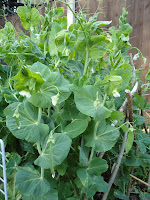Gaillardia aristata, also called Gaillardia grandiflora is a beautiful red and yellow daisy like flower which is excellent for cutting. It is a hardy perennial growing to about 24-30 inches high and makes a bright addition to the herbaceous border. Flowers are up to 3 inches across and borne from June to October. Also known as the blanket flower, this pretty plant was introduced into Britain in 1812. It is native to Western Canada, Western USA and New Mexico.
Gaillardia aristata is the parent plant to a number of striking garden hybrids which range in colour from orange-yellow through shades of red to burgundy. There is a dwarf variety called 'Goblin' which only grows to 9 inches high and is suitable for the smaller garden or the front of the border.
Gaillardias thrive in a light, well drained soil and prefer a sunny position, although they will grow reasonably well in any soil and will tolerate light shade. Taller plants with large flower heads will need some support and removing dead flower heads will prolong the flowering period.
There is an annual species called Gaillardia pulchella which grows to a slightly lesser height of 18 inches.
Both annual and perennial species can be grown from seed. Sow in pots or trays of seed compost in February and March under glass at a temperature of 15 degrees Celsius. Harden off in a cold frame before planting out in May when all risk of frost has passed. Alternatively, sow annual seeds outside directly into the flowering site in April and thin out the seedlings to the required planting distance.










.JPG)








.JPG)

